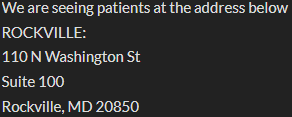Medical Offices and Urgent Care Centers Find Their Place in the Net Lease Market
The Net Lease Medical Sector is rapidly evolving. In the past it has been heavily dominated by dialysis companies like Fresenius and Davita Dialysis, but in recent times hospitals, healthcare systems, and urgent care centers have begun to create a commanding presence in the net lease market.
The emergence of medical offices as a popular single tenant net lease asset is due in large part to the Stark Law and Anti-Kickback Statute, which penalize hospitals for referring patients to a physician with whom they have a financial association other than payment for services. This includes rent payments from tenant physicians to hospitals.
As a result, hospitals have begun to build medical office buildings through developers and sale leaseback transactions. The structure of these arrangements shifts the hospital from the role of the landlord, to the role of the tenant. Hospitals are a more secure guarantor than individual practitioners, and they tend to sign long term leases of 15-20 year minimums.
These full service medical office buildings and urgent care facilities are prime investments for investors interested in single tenant net lease assets. Here are four reasons why.
1) Medical Offices and Urgent Care Facilities Offer Strong Tenant Retention
Capital improvements of $200 psf are common for medical tenants due to the high cost of equipment and trade fixture installation. The high cost of switching locations, leads tenants to sign long term 15-20 year leases and dictates they will remain in your facility for a long period of time. The lease is signed by one guarantor. However, there is usually a wide mix of tenant specialties, each supplying patients to another sector. This prohibits tenants from changing location.
2) Net Lease Properties in the Medical Sector have Higher Returns for Similar Levels of Risk
According to Calkain’s in-house research, the average STNL cap rate for 2016 was 6.25% excluding properties in the medical sector. The overall medical sector for STNL in 2016 came in higher at 6.83%. This spread has narrowed in 2017 due to the increase in demand for medical properties.
3) Medical Office Buildings and Urgent Care Centers Are Recession Proof
There is a high demand for healthcare services no matter the economic conditions. In fact, the operational strength of these facilities increases in hard times. According to the David Lawrence Center, in 2009 Urgent Care admissions increased by 47%, Adult Medical Services increased by 27% and Children’s Outpatient Services rose 90%.
4) Medical Sector Single Tenant Net Lease Properties Have Great Locations
The industry is still in its infancy, allowing for new operations to be developed in highly visible locations within prime real estate markets. Thereby reducing the re-tenant risk investors take on, should the tenant decided to opt out of their lease at the end of the 20 year term.
When the credit of the guarantor, location of the properties, long-term leases, stable cash flows, and higher returns are taken into account, it is easy to see why the net lease medical sector is currently one of the most attractive property types for single-tenant net lease investors. The outlook for the Medical Net Lease Sector is very bright over the next 10 years.





